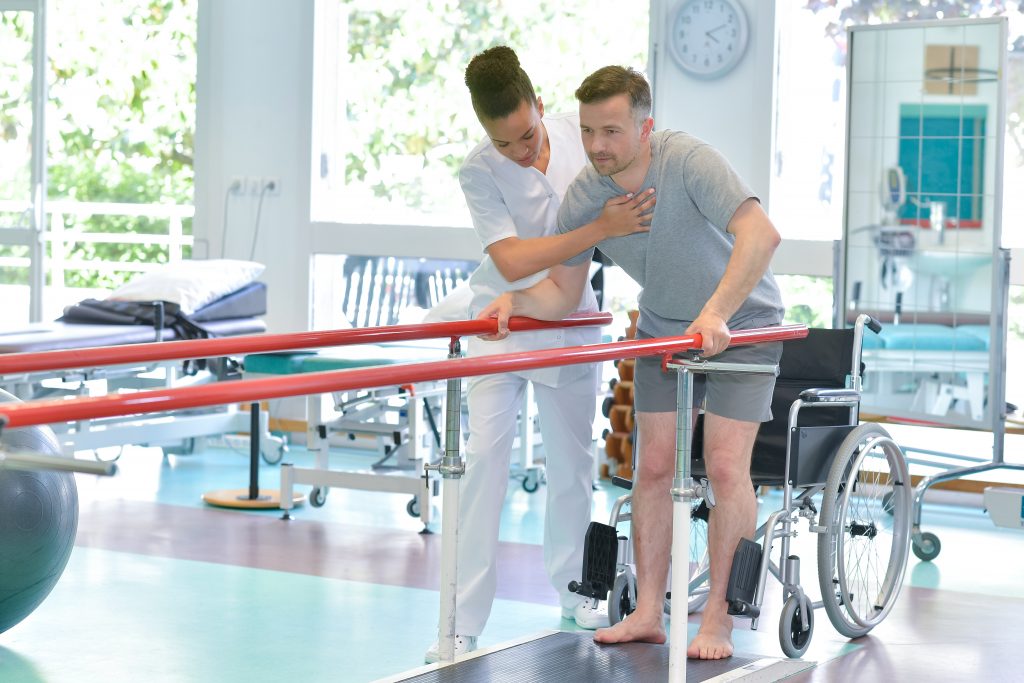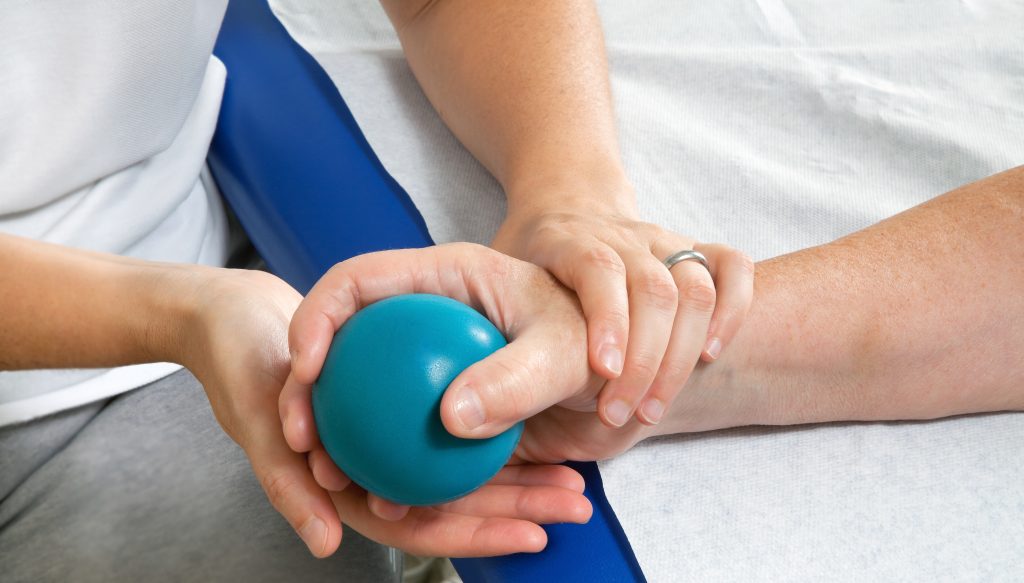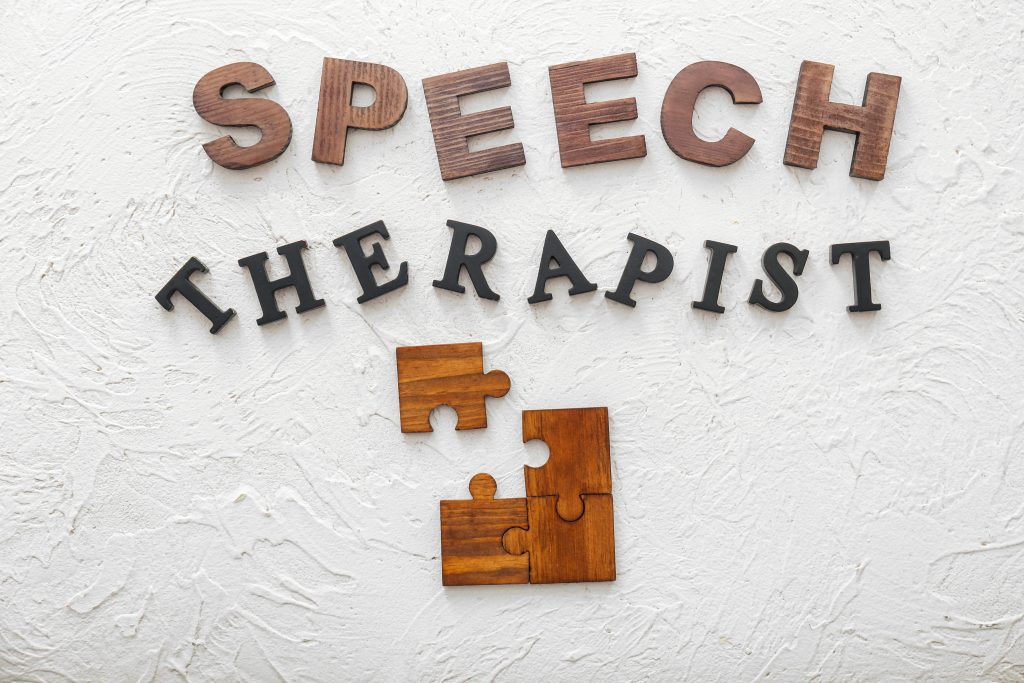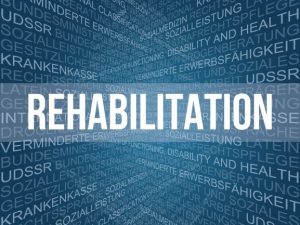Inpatient Rehabilitation Facilities (IRFs) can be very beneficial for patients and families who decide to go through the program. As mentioned in my previous blog Top 5 Benefits of Inpatient Rehabilitation, one of the benefits is that patients get to work with multiple disciplines that assist in each phase of their recovery. Once placed in an IRF program, patients will be receiving therapy services from at least (2) disciplines; (1) of which have to be either PT or OT.
At this point, I’m usually getting a flood of questions from patients asking, what is the role of a Physical Therapy (PT),
Occupational Therapy (OT), and Speech Therapy (SLP), so I’ve decided to break down the different roles of these disciplines in the following paragraphs.
Property of rehaballey. com
The ROLE OF THE PT

When you think of PT in an Inpatient Rehabilitation Facility, I want you to think of MOBILITY. The primary role of the PT is to be able to improve a patient’s mobility to the highest functional level possible. In an inpatient rehabilitation setting, mobility activities, for PTs, usually consist of (4) main areas:
- BED MOBILITY
- Ability to roll side-to-side and transition from sitting to lying, and back to sitting
2. TRANSFERS
- Includes going from sitting to standing, and back to sitting. Also includes getting in and out of a car, bed, or chair
3. WALKING/WHEELCHAIR MOBILITY
- Ability to get around via walking or wheelchair.
4. ASCENDING/DESCENDING STAIRS/STEPS/UNEVEN SURFACES
- Also includes curbs, inclines, or ramps.
If patients are still having difficulty with mobility, the PT can recommend Mobility Equipment (Links) such as walkers, wheelchairs, crutches, canes, and/or lower extremity orthoses, to assist with improving functional independence.
In addition to mobility activities, the PT will also work to improve deficits that may affect a patient’s mobility, which can include:
- STRENGTHENING EXERCISES
- Usually involves the lower extremities and core, but can include the upper extremities as well.
2. BALANCING EXERCISES
- Sitting or Standing Balance (can be either static or dynamic)
3. NEUROMUSCULAR REEDUCATION
- Activities designed to restore the body’s normal movement patterns by retraining the muscle & nerves that work in conjunction with each other.
4. MODALITIES
- Devices used to assist with strengthening muscles, retraining the neuromuscular system, and managing pain.
5. ENDURANCE TRAINING
- Usually focuses on the patient’s breathing patterns, as well as their ability to sustain a day’s worth of activities in a reasonable amount of time. (Can include energy conservation strategies).
6. HOME EXERCISE PROGRAM (HEP)
- Provides patient’s with exercises or activities to perform as homework on their own time.
7. PATIENT/FAMILY EDUCATION
- Can include safety tips, general information, and community resources as it relates to the patient’s deficits & recovery process. Can also include a family training session.
Some therapists are certified/specialize in a specific intervention and can provide more specialized training for patients who qualify. The doctor will write orders if a more specialized skill is needed in inpatient care.
The ROLE OF THE OT

The role of the Occupational Therapist and Physical Therapist are quite similar in that they both strive to improve functional independence. PTs and OTs work hand-in-hand often overlapping activities that were discussed in the previous section, such as walking and transfers.
OTs in an Inpatient Rehabilitation Facility, focus primarily on Activities of Daily Living or ADLs. Think of ADLs as basic everyday self-care tasks that you do to prepare yourself for the day or night. These tasks include:
- Dressing
- Bathing
- Grooming
- Shaving
- Brushing/combing hair
- Putting on make-up
- Washing your face & hands
- Brushing your teeth
- Using the bathroom
- Eating
As the patient progresses with these basic level ADLs, OTs can progress the patient to more higher-level activities, also called Instrumental Activities of Daily Living or IADLs. These activities can include:
-Cooking
-Laundry
-Cleaning
-Managing Finances
-Managing Medications
-Running Errands
As mentioned earlier, the role of the OT can overlap and focus on transfers as well; particularly in the bathroom setting. These transfers can include getting in & out of the shower, and/or transferring on & off of the toilet.
OTs also work to improve deficits that affect the patient’s ability to perform ADL tasks independently, similar to the interventions listed above in the PT section. However, OTs focus more on upper extremity exercises involving the muscles surrounding the:
-Neck
-Shoulder
-Upper Back
-Elbow
-Wrist
-Fingers
If issues with patient function still persist, OTs can also modify equipment, such as using weighted utensils for patients with motor control deficits. OTs can also use Adaptive Equipment (Links) for patients who have more difficulty completing ADL tasks independently.
Property of rehaballey.com
The ROLE OF THE SPEECH THERAPIST (SLP)

Most patients, when they first hear of Speech-Language Pathologists or (SLP), usually think of speaking as the only task involved. I’ve had some patients even ask “why am I getting speech therapy, I can speak just fine.”
Although SLPs in the Inpatient Rehabilitation Facility do work to improve speaking and language disorders, their role is so much more involved. SLPs also work to diagnose and treat swallowing disorders also known as dysphasia, as well as address cognitive and psychosocial functioning such as:
- Problem-solving
- The processes involved in finding a solution to complete the desired task.
2. Memory
- Ability to recall people, places, events, tasks, situations, and information.
3. Social Interaction
- The ability to behave and interact appropriately with others.
4. Expression
- Ability to verbally express oneself clearly, and the use of vocabulary to form meaningful and grammatically correct sentences. (Example of dysfunction is expressive aphasia which usually occurs in people that have had a stroke).
5. Comprehension
- The ability to understand expressed language, and apply the information to achieve a particular task. (Example of dysfunction is receptive aphasia which usually occurs in people that have had a stroke).
During the sessions, SLPs provide patients with activities & exercises designed to test, challenge, and improve the areas listed above, to increase independence and achieve baseline functioning.
If dysphasia is suspected, then a test known as the modified barium swallow or (MBS) can be ordered to confirm the disorder. The MBS uses images of the patient’s throat as various textures of food and liquid are being swallowed, and can determine if aspiration is occurring. Simply put, aspiration occurs when foods/liquids swallowed enter through the trachea and down into the lungs instead of through the esophagus and down through the digestive system.
Aspiration can cause symptoms such as coughing or wheezing, but in some cases may not cause symptoms at all (silent aspiration). If dysphasia has been confirmed, then the SLP may modify the texture of the diet by thickening or softening foods as a way to prevent aspiration and the chances of developing aspiration pneumonia.
The SLPs can also provide HEPs that assist with improving these areas of dysfunction.
Property of rehaballey.com
Hopefully, this brief article helps to explain the roles of each therapist in an Inpatient Rehabilitation Facility, and helps you make a better decision regarding you or your loved ones’ care. GOD BLESS YOUR ENDEAVORS!!






The segment of your article that talked about strengthening exercises and rehabilitation was really helpful. My brother has been recovering from his bike injury for days now, and we’d really like for him to heal as quickly as possible. I’ll hire a physical therapy expert in the area for sure so this process can be done at a more effective rate.
I’m so glad you found this blog helpful. I hope your brother finds a great physical therapist and fully recovers.